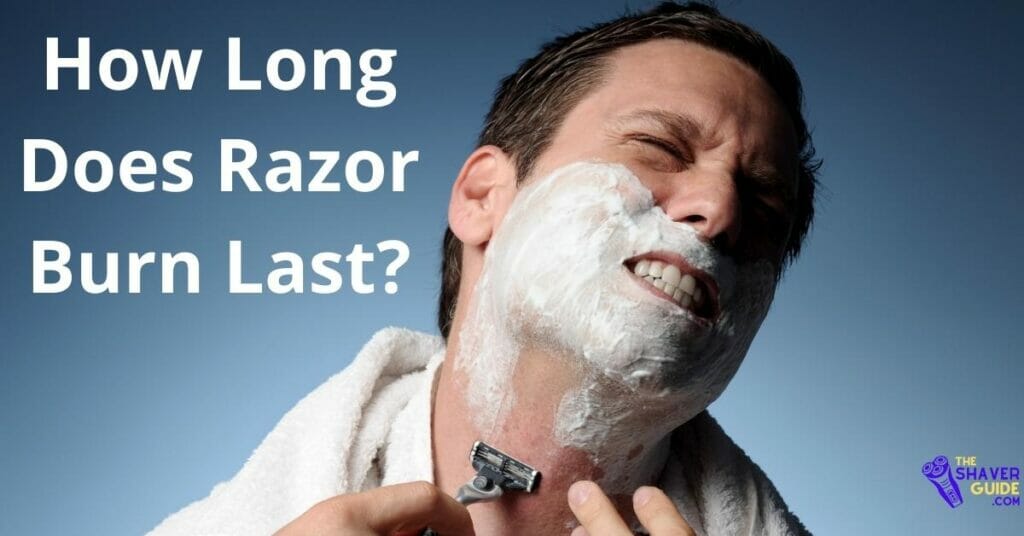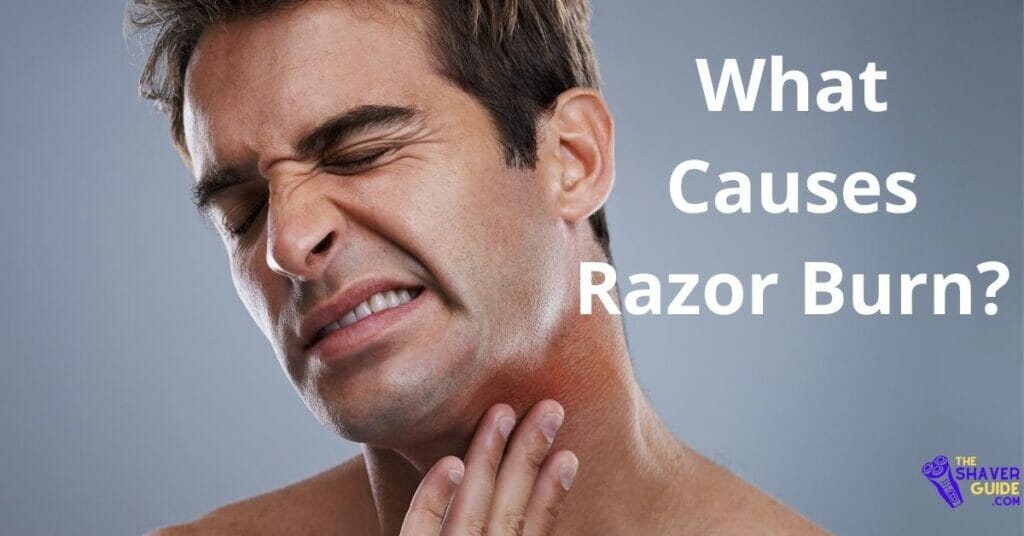Table of Contents
Introduction: What is Razor Burn?
How long does razor burn last? Razor burn is a common problem that can be caused by shaving too closely or using a blunt blade in the wrong direction. It can cause redness, itching, and burning sensations and can sometimes lead to skin irritation and razor bumps. The good news is that there are several ways to treat razor burn and make it go away faster. However, it can be uncomfortable and may lead to skin infections if the skin is broken.
How Long Does It Take Razor Burn To Go Away?

Razor burn typically lasts for a few hours to a few days. It usually goes away on its own within a week. However, severe razor burns may last for several weeks.
Razor burn tends to last for a few days (even weeks in some cases), so you might have to wait a while in order to have a completely painless shave. Massaging aloe vera gel or coconut oil on the affected area is a natural way of dealing with razor burns, as it will reduce redness and swelling.
Make sure you shave according to the direction of your hair’s growth, and don’t use razor blades that are dull or old. You should also try to exfoliate regularly, as it will do wonders for your skin and will help to avoid razor burns and other similar problems.
What Causes Razor Burn?
Razor burn is a very common and irritating skin condition that affects almost all men, and a smaller group of women as well. This condition is caused by frequent shaving and the acute sensitivity of the skin to the razor blade. Razor burn can be caused by a number of things. A few of them are given below.

The most popular and common reason is the use of substandard shaving products.
Razor burn is also caused by shaving too close to the skin or by using a dull razor. Shaving with a dull razor can cause the hair to be pulled out rather than cut, which can lead to inflammation and irritation.
By using the blunt blade, dragging and pulling against the skin. This can result in ingrown hairs, razor bumps, and general skin irritation.
If you don’t rinse the blade after every pass to remove hair and shaving cream. Also, over-shaving or shaving with dull blades can cause razor burn.
In addition, shaving with a razor that is too sharp can also cause razor burns.
How Can I Prevent Razor Bumps?

You can prevent razor bumps by using a sharp razor and shaving in the direction of hair growth. In addition, you should avoid shaving too close to the skin.
Razor bump can be minimized by only raising the razor once and not applying pressure to it when shaving.
If you are prone to razor burn, you should try an electric shaver. Electric shavers are less likely to cause razor burns than manual razors.
You should also avoid using alcohol-based aftershaves, as they can dry out the skin and make razor burn worse.
Soothing Razor Burn

If you experience razor burn, there are several things you can do to relieve the symptoms. These include:
Razor burn can be treated with over-the-counter (OTC) medications such as hydrocortisone cream or anti-inflammatory creams. These creams can help reduce redness, swelling, and irritation.
You can also try using cold compresses or ice packs to help relieve symptoms.
You can also use a moisturizer on the skin to relieve some of the burning.
You can soothe skin by putting a thin layer of aloe vera gel on the affected area.
Avoid activities that will irritate the skin, such as sun exposure and tanning beds.
If razor burn is severe or does not improve with home treatment, you should see a doctor. A doctor can prescribe a stronger topical steroid or an oral antihistamine to help relieve the symptoms. In rare cases, razor burns can lead to skin infections.
If you experience any signs of infection, such as pus or redness, you should see a doctor.
User Journey with Razor Burn: Overcoming Challenges and Finding Solutions
Here i have explained the personal journy of a user with razor burn,
“Dealing with razor burn has been a persistent struggle for me over the years, causing frustration and discomfort. After trying numerous remedies and researching extensively, I’ve come to understand the importance of identifying the causes and finding effective treatments.
Growing up with sensitive skin, I constantly battled with post-shave irritation. Each attempt at a close shave seemed to result in a bout of razor burn, leaving my skin red and uncomfortable for days. It felt like an endless cycle of discomfort and frustration.
Discovering an article that delved into the causes and treatments of razor burn was a turning point for me. Finally, I found a resource that understood the challenges I faced and provided valuable insights and solutions.
The article shed light on common causes of razor burn, such as shaving too closely, using dull blades, and shaving against the grain. These were all mistakes I had made, contributing to my recurring razor burn. It was reassuring to see my experiences reflected in the content, emphasizing the importance of proper shaving techniques.
Armed with this newfound knowledge, I implemented the recommended strategies to prevent and alleviate razor burns. Investing in high quality shaving products, adjusting my shaving routine to follow the direction of hair growth, and incorporating soothing natural remedies like aloe vera gel and coconut oil became integral parts of my post-shave routine.
As I prioritized proper skincare and adopted mindful shaving practices, I noticed a significant improvement in the frequency and severity of razor burn episodes. I had reclaimed control over my skin and could enjoy smoother, more comfortable shaves.
My journey with razor burn has been one of perseverance and discovery. Through trial and error, I’ve learned valuable lessons about skincare and self-care, empowering myself to overcome challenges and find effective solutions. While razor burn may still appear occasionally, I face it with confidence, armed with the knowledge and experience gained along the way”.
Conclusion: How Long Does Razor Burn Last?

If you were looking for answers to the common question, How Long Does Razor Burn Last? then this article provides you the complete guidance.
Razor burn is a common skin disorder that affects men and women after shaving. The little nicks and cuts that occur during shaving can be painful and annoying and can turn into razor burns if you aren’t careful.
Luckily, razor burn doesn’t last forever, and you can treat it quickly and easily. However, if you don’t take proper care of it, the symptoms may last longer.
FAQs:
What is the typical duration of razor burn?
Razor burn typically lasts from a few hours to a few days, with more severe cases potentially lingering for several weeks. In most cases, it resolves within a week, but the duration can vary depending on individual factors and the level of irritation.
What are the common causes of razor burn?
Razor burn can occur due to several factors, such as shaving too closely, using dull blades, shaving against the grain, and using low-quality shaving products. These factors can lead to inflammation, irritation, and the development of razor bumps, which can cause discomfort associated with razor burn.
How can razor bumps be prevented?
To prevent razor bumps, it’s best to use a sharp razor and shave in the direction of hair growth. Avoid shaving too close to the skin and applying minimal pressure on the razor can also help prevent razor bumps. Choosing an electric shaver and avoiding alcohol-based aftershaves can further reduce the likelihood of razor bumps.
What are some effective ways to soothe razor burn?
To soothe razor burns, you can try over-the-counter creams like hydrocortisone or anti-inflammatory creams to reduce redness and swelling. Applying cold compresses, ice packs, moisturizers, and aloe vera gel can also provide relief.
Avoid anything that could further irritate the skin. If the razor burn is severe or doesn’t improve with home treatment, seek medical help.

